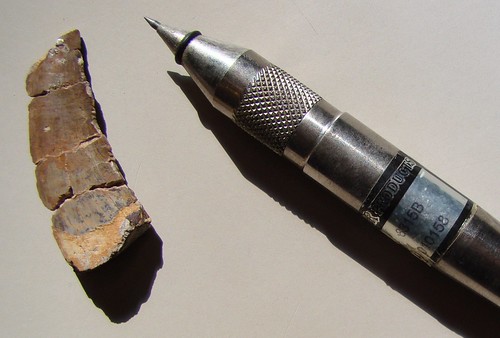
When most folks think about our grand and beautiful national forests they probably don’t conjure up images of a fearsome Tyrannosaurus rex munching on his morning prey or a gentle Brachiosaurus chewing enough leaves to nearly fell a small forest just to fill her vegetarian stomach.
But millions of years ago this was exactly what was happening on lands that today comprise national forests and grasslands like the Thunder Basin National Grassland.
We know this because fossilized evidence is widespread on many acres managed by the agency. And, according to Forest Service paleontologist Mike Fracasso, lots of people visiting forests and grasslands want to take a piece of this fossilized history home for themselves.
“We generally don’t have an issue with the average visitor to a forest or grassland taking home a small sample or two of a common and abundant plant or animal fossil without a backbone,” said Fracasso.
Because it’s often all about that backbone.
Ancient animals that developed a vertebrae (or backbone) are rarer to find than plants or non-vertebrate animals and fossil bones that, at first glance look isolated, often lead to more complete skeletons. By collecting such fossil bones, a national forest visitor may be unwittingly destroying the fossilized evidence of a full dinosaur skeleton or worse, the only evidence of a creature new to science and yet to be discovered.
It is the job of paleontologists working for all federal land management agencies to educate visitors about the importance of what may or may not be collected from federal lands. To emphasize this educational importance, as well as to recruit young folks into the field of fossil hunting, the National Park Service and Smithsonian Institution sponsored a ceremony on National Fossil Day last fall to recognize a new crop of junior paleontologists.
“These young folks are enthusiastic ambassadors of awareness to the larger community,” said Fracasso. “They’re the ones that will be able to explain to their friends and family why they should be careful about what type of fossils to take off our national lands.”
Even small pieces may lead archeologists to great discoveries.
In Colorado, so many dinosaur fossils were being discovered in a quarry on the Comanche National Grassland that experts referred to the find as a “tossed salad of dinosaur parts." In 2012, workers found the first Ceratosaurus tooth within the Picket Wire Canyonlands, best known for a huge dinosaur track site along the bank of Purgatoire River.

That same year, Forest Service paleontologist Barbara Beasley was leading another crew of 20 volunteers when she found a Tyrannosaurus Rex tooth on the Custer National Forest in South Dakota. The rare find is estimated to be 66 million years old.
On the Thunder Basin National Grassland in Wyoming, Passport in Time volunteers unearthed an intact nearly three-foot Triceratops horn.
Passport in Time is a Forest Service volunteer archaeology, paleontology, and historic preservation program. Through this program, students and volunteers get the opportunity to go in the field and work shoulder-to-shoulder with professional Forest Service archaeologists, paleontologists and historians on a wide variety of activities throughout the U.S.

